Birds Of Senegal And The Gambia
Senegal and the Gambia, two neighbouring countries in West Africa, offer birders an incredible opportunity to observe a wide variety of bird species. With its unique ecosystems and varied habitats, the region is home to over 600 bird species, many of which are endemic to the area. The Birdlife International organisation has designated The Gambia as an Important Bird Area (IBA), recognising it as a critical habitat for bird conservation. Similarly, Senegal is a popular destination for birders due to its many national parks and reserves that offer prime birding locations.
The birds of Senegal and the Gambia are a source of wonder for birding enthusiasts around the world. The region is a must-visit destination for any serious birder. The African Fish Eagle, with its majestic presence, can often be seen perched on a tree overlooking a body of water, while the stunning Egyptian Plover, with its bright orange bill and striking black and white plumage, is a favourite among birders. The yellow-crowned gonolek, with its distinctive yellow crown and red eye ring, is another popular bird species found in the area. The Blue-bellied Roller, African Grey Hornbill, Piapiac, and Greater Painted Snipe are just a few more of the many bird species that call Senegal and The Gambia home.
African Golden Oriole
The African Golden Oriole can frequently be seen in wooded regions in Senegal and The Gambia, especially those with big trees that can serve as nesting locations. The beautiful and lyrical songs of these birds are well known, and they are frequently heard in the early morning and late afternoon. The African Golden Oriole is predominantly a fruit-eating bird, including figs, berries, and other types of wild fruits. Insects are another food source for them, especially during the breeding season when they must provide for their young.
The African Golden Oriole is a magnificent bird with lovely songs, but habitat loss and hunting have made it a threatened species despite this. The long-term survival of this famous bird species in Senegal and The Gambia depends on conservation efforts, and programmes like the establishment of protected areas and the control of hunting practises can aid in securing their future.
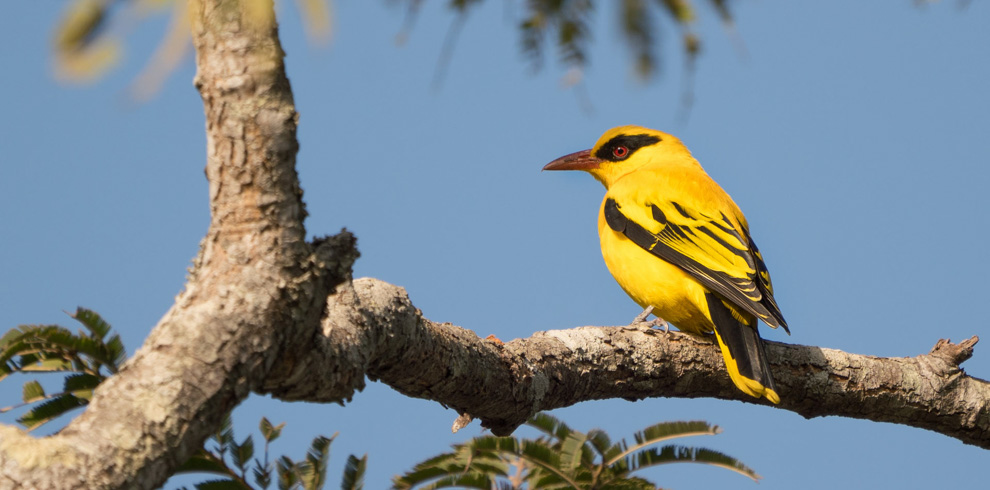
Photo Credit - African Golden Oriole - Karanta Camara
Bronze-winged Courser
Bronze-winged Senegal's arid regions, such as the Ferlo region and the Sahelian regions, are home to the intriguing bird species known as the courser. These birds are well-known for their remarkable appearance, which includes their body stripes and bronze-coloured wings. The ground-dwelling Bronze-winged The courser is a bird that has evolved to live in dry and semi-arid climates. Because of their habitat's rocky and sandy environment, they have long, slender legs that are well suited for running. Insects, spiders, and other small invertebrates are what these birds are frequently observed chasing across the ground.
The bronze-winged courser is a well-liked bird in Senegal among nature lovers and birdwatchers. However, this bird species is endangered and is experiencing population decreases in some parts of its range as a result of habitat loss and poaching.
African scops owl
Bronze-winged The courser is a remarkable type of bird that inhabits the dry areas of Senegal, including the Ferlo region and the Sahelian sections of the nation. With bronze-coloured wings and a recognisable striped pattern on their bodies, these birds are renowned for their remarkable look. A ground-dwelling bird that can survive in arid and semi-arid climates, the bronze-winged courser Their long, slender legs are well suited for running on the rocky and sandy terrain of their habitat. Insects, spiders, and other small invertebrates are what these birds are frequently observed chasing across the ground.
It's common to see these birds scurrying on the ground in search of insects, spiders, and other tiny invertebrates.
The bronze-winged courser is a well-known bird in Senegal among birdwatchers and nature lovers. The population of this bird species is declining in some parts of its range as a result of habitat loss and hunting, which makes it a vulnerable species.
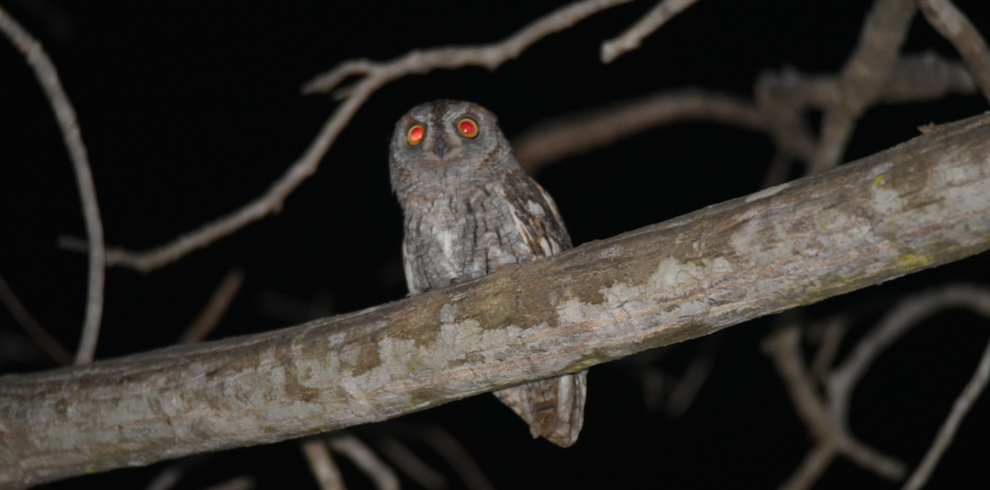 - Gambia Birding Tours.jpg)
Photo Credit - African scops owl - Karanta Camara
Black Egret
The Black Egret is a medium-sized wading bird species that is found in The Gambia. It has all-black plumage, long, thin legs, and a distinctive black bill. What makes this bird species unique is its feeding behaviour, which involves using its wings to create a shady area around it while it stalks its prey. They are known for their distinctive feeding behaviour, which involves holding their wings out to create a canopy of shade over the water. This not only makes it easier for the bird to see its prey, but it also attracts fish to come closer to the shade, making them easier to catch.
The Black Egret primarily feeds on small fish, frogs, and other aquatic invertebrates that it can catch with its long bill. Their unique feeding behaviour is a fascinating sight to see, and birdwatchers and nature enthusiasts from around the world come to Gambia to witness it.
The chestnut-bellied starling is a bird species that is found in many parts of sub-Saharan Africa, including Senegal and The Gambia. This bird species is known for its striking appearance, with chestnut-coloured underparts and a glossy blue-black head, back, and wings.
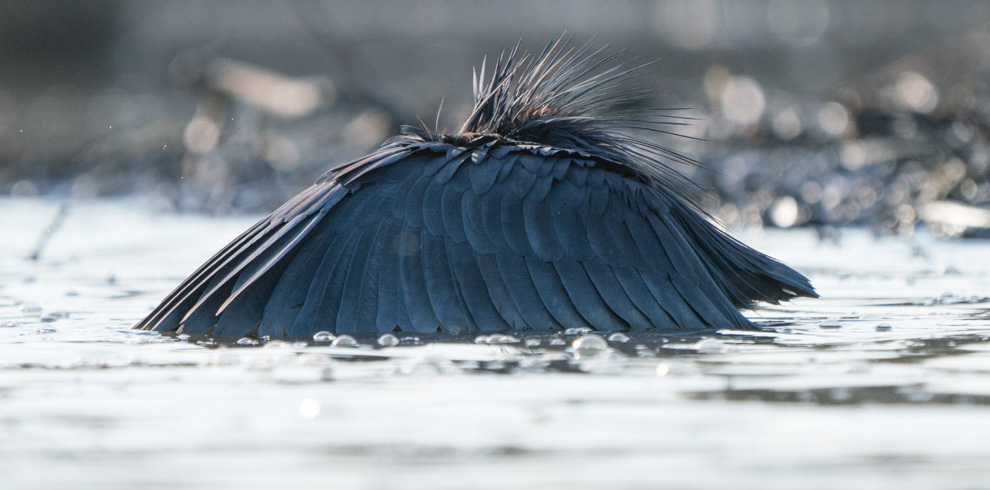
Photo Credit - Black Egret - Karanta Camara
Chestnut-bellied Starling
The chestnut-bellied starling is a medium-sized bird, with a length of around 21cm (8 inches) and a weight of up to 85 grammes (3 ounces). It is a social bird that is often seen in flocks, especially during the non-breeding season when they gather to roost and feed.
In Senegal and The Gambia, the chestnut-bellied starling is commonly found in wooded areas and savannas, especially those with scattered trees and shrubs. They are also found in agricultural areas and parks, where they feed on a variety of insects and fruits. The chestnut-bellied starling is known for its beautiful and complex songs, which are often heard in the early morning and late afternoon. Their calls are a mixture of musical notes and harsh squawks, which are used to communicate with each other and defend their territory.
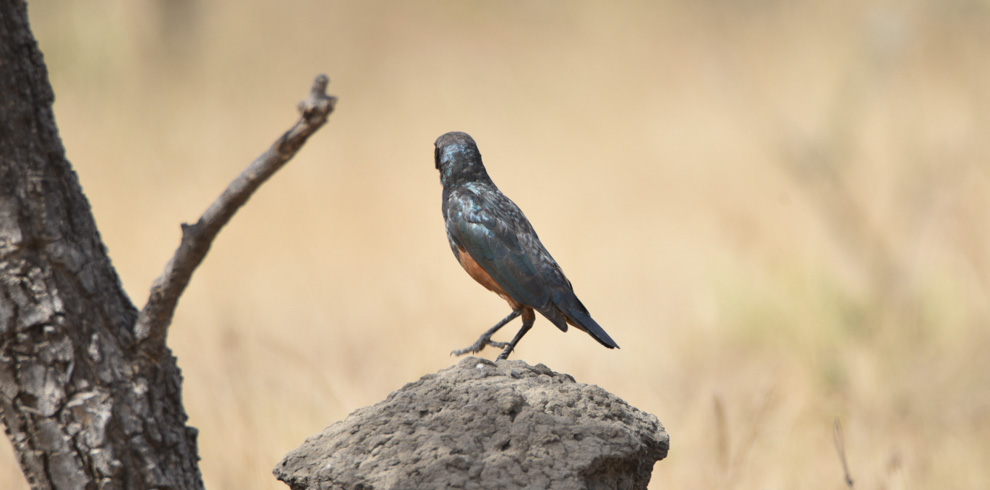 - Gambia Birding Tours.jpg)
Photo Credit - Chestnut-bellied Starling - Karanta Camara
Egyptian Plover
Senegal and the Gambia are home to the interesting and rare Egyptian Plover, also referred to as the Crocodile Bird. This bird species holds a prominent place in many African folktales and customs due to its distinctive look and peculiar behaviour.
The Egyptian Plover is a medium-sized bird that can grow to be around 17 cm (7 inches) long and up to 65 g (2 oz) in weight. With white plumage and a black stripe across its chest and forehead, it has a striking appearance. The brilliant orange bill and legs of this bird stand out the most against its white feathers.
The peculiar habit of the Egyptian Plover to clean the teeth of crocodiles and other large reptiles is what distinguishes it from other birds. Although the reason for this behaviour is unclear, it is thought that the bird consumes parasites and other material found in the crocodile's mouth. Cleaning the crocodile's teeth benefits it by assisting in the prevention of infections and other dental issues.
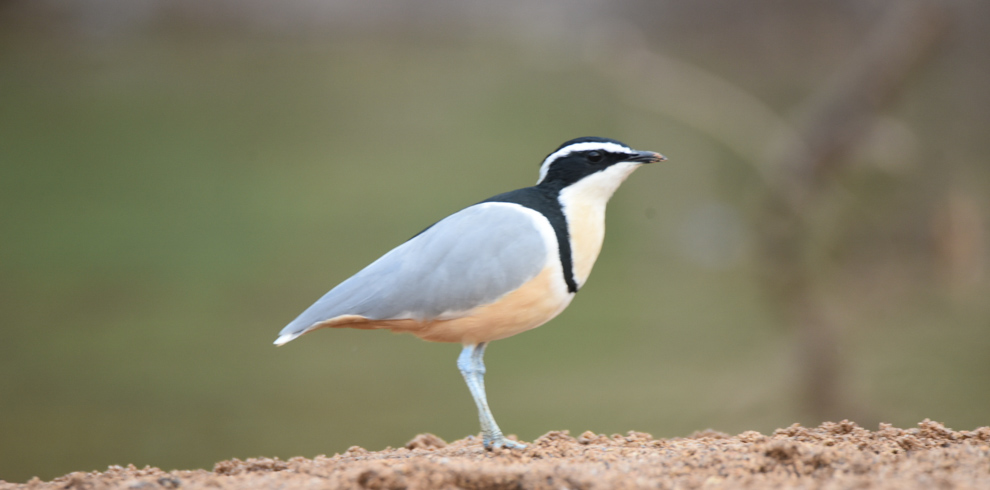
Photo Credit - Egyptian Plover - Karanta Camara
Great-headed Kingfisher
The great-headed kingfisher, also known as the laughing kookaburra, is found in many parts of sub-Saharan Africa, including Senegal and The Gambia. This bird species is known for its striking appearance and unique vocalisations, which have earned it a place in many African folklore and traditions. The great-headed kingfisher is a large bird, with a length of around 43cm (17 inches) and a weight of up to 355 grammes (12 ounces). It has a distinctive appearance, with bright blue plumage and a brownish-orange head. Its most striking feature is its large bill, which is used to catch fish and other aquatic prey.
The great-headed kingfisher is commonly found in wooded areas and savannas, especially those with water sources such as rivers and ponds in Senegal and The Gambia. They are known for their loud and distinctive call, which is a series of loud cackling laughs that can be heard from a long distance. The great-headed kingfisher is a skilled hunter, using its sharp eyesight to spot fish and other prey in the water. It then dives headfirst into the water to catch its prey, using its powerful bill to grasp and swallow it whole.
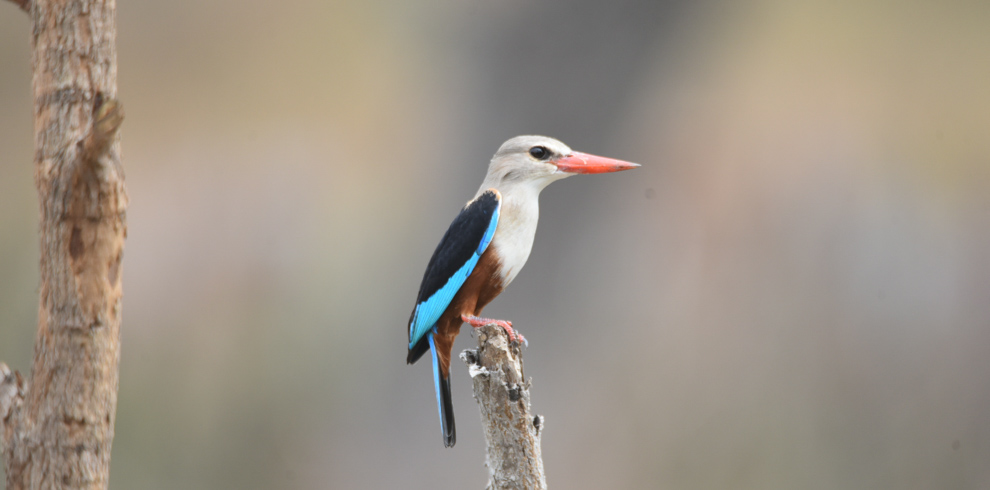
Photo Credit - Great headed Kingfisher - Karanta Camara
Pied Kingfisher
The Pied Kingfisher is a small, black-and-white bird species found in many places in Senegal and The Gambia. The Pied Kingfisher has distinctive black and white plumage, with a black cap and a white face and throat. Its most striking feature is its long, pointed bill, which it uses to catch fish and other aquatic prey. The Pied Kingfisher is commonly found near water sources such as rivers, lakes, and estuaries. They are known for their unique hunting behaviour, which involves hovering in mid-air over the water and then diving headfirst into the water to catch fish. They are also known to beat their prey against a hard surface to kill it before swallowing it whole.
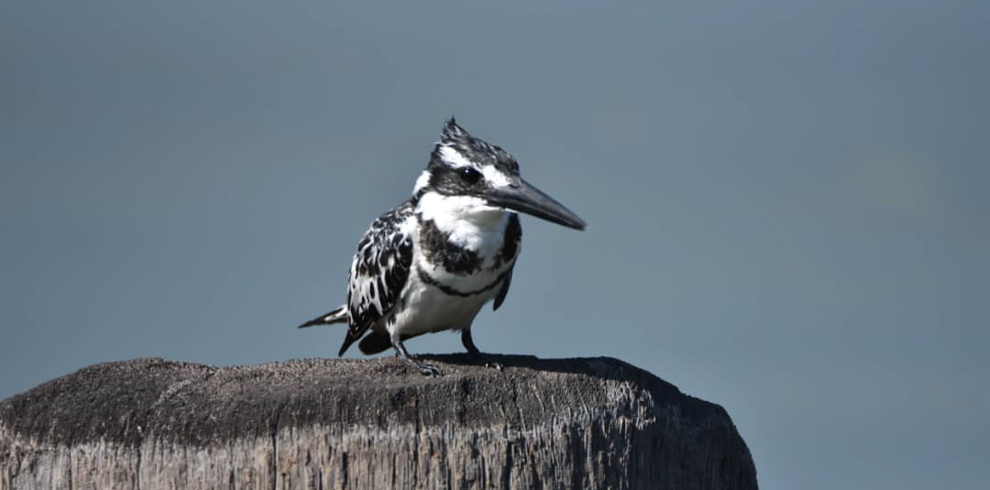
Photo Credit - Pied Kingfisher- Karanta Camar
African Fish Eagle
From the Senegal and Gambia river systems in the west to Lake Victoria in the east, the beautiful African Fish Eagle may be found all throughout the continent. It is renowned for its striking look and formidable hunting abilities, making it one of Africa's most recognisable birds. An African Fish Eagle's wingspan can measure up to 2 metres (6.6 feet), making it a sizable bird. It features white head and tail feathers, a bright yellow beak, and dark brown feathers. Its piercing yellow eyes add to the menacing image of the creature.
Grey Hornbill (National Bird of Gambia)
The national bird of Gambia is the grey hornbill (Tockus nasutus). Also known as the African Grey Hornbill or Northern Red-billed Hornbill, this striking bird is a medium-sized species of hornbill known for its distinctive appearance and unique behaviour.
The Grey Hornbill is known for its prominent, downward-curved red bill with a black casque on top. Its plumage is predominantly grey, with a white belly and black and white tail feathers. The male and female Grey Hornbills look similar, but the male has a larger casque on its bill.
In addition to its appearance, the grey hornbill is known for its interesting nesting behaviour. The female Grey Hornbill seals herself inside a tree cavity using a mixture of mud, droppings, and food remains, leaving only a small slit for ventilation. She then lays her eggs and incubates them, relying on the male to bring her food through the narrow opening during the incubation period, which can last for several weeks. This unique nesting behaviour has earned the Grey Hornbill a reputation as a skilled builder and dedicated parent.
As the national bird of Gambia, the grey hornbill holds special significance for the country's cultural and natural heritage. It is considered a symbol of the country's rich biodiversity, unique wildlife, and the importance of conservation efforts to protect and preserve its natural treasures.
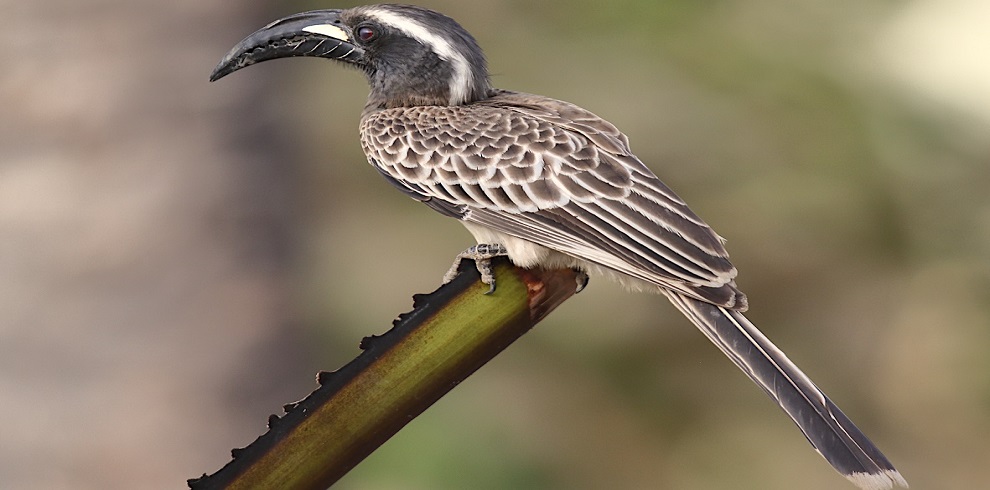
Grey Hornbill (National Bird of Gambia)
Overall, bird watching in Gambia and Senegal offers a unique opportunity to appreciate the beauty and importance of the avian world while also supporting local communities and conservation efforts.
To Explore all of the birds of The Gambia and Senegal please visit us.
About the author:

Karanta Camara
A photographer experienced bird tourguide
for over 18 years experience across The Gambia
and Senegal also doubled as the President BWA
Facebook link Instagram link
Read also:
The Gambia Tours
Gambia River Tours
Birding and Photography in The Gambia and Senegal
Best Time For Birding In The Gambia
Wildlife Tours in Senegal
Birds of Senegal
Wildlife of The Gambia